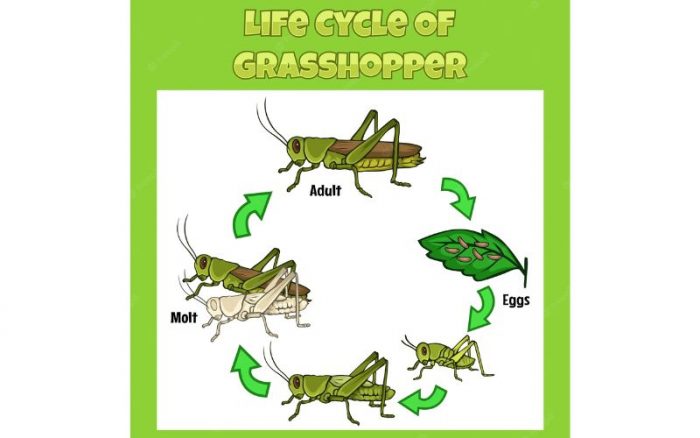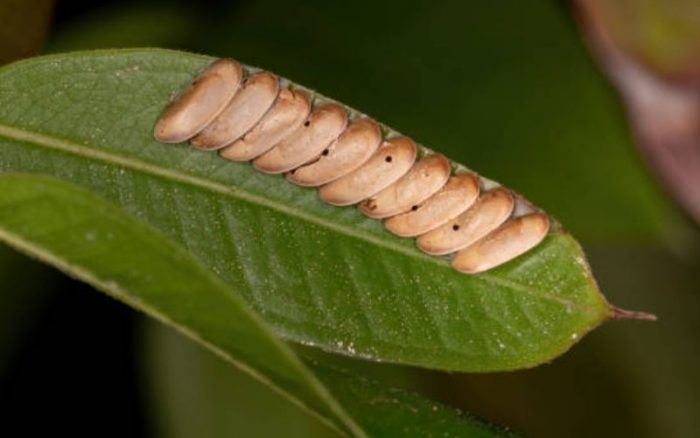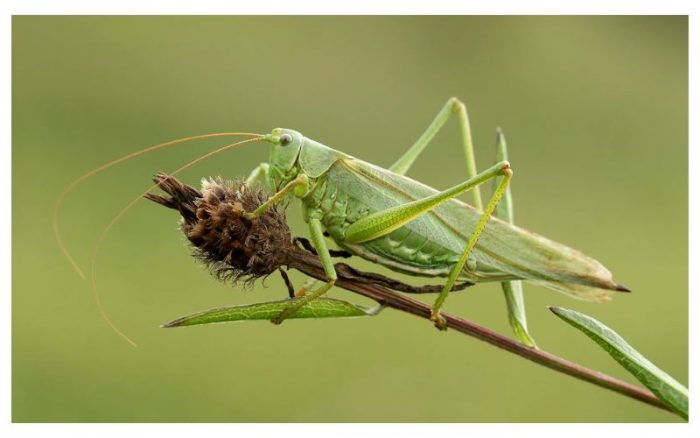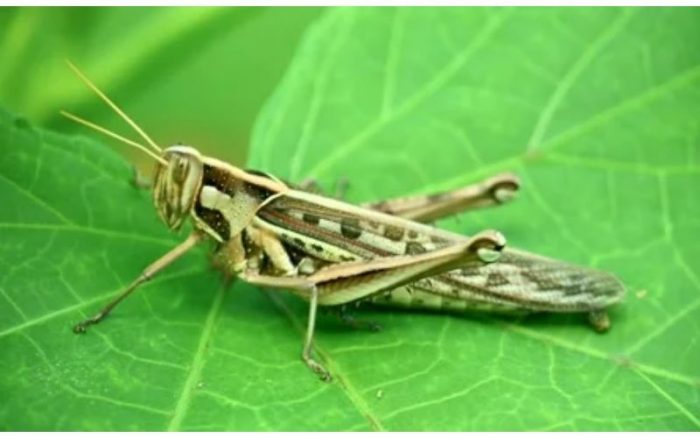Grasshoppers are jumping insects like crickets and can also fly. The grasshopper life cycle starts with laying eggs and ends after becoming an adult. They spend all their life molting, chirping, dancing, and finding food. So, if you are curious about their life cycle, this article is for you.
Grasshopper Life Cycle

The grasshopper life cycle includes the following –
Eggs

Just like every insect, the grasshopper life cycle starts with eggs. The female grasshopper lays eggs in the mid-summer in the form of egg pods. They usually lay ten or more egg pods at a time, each containing around 10-300 rice-shaped eggs. They prefer sand or leaf litter to lay eggs. By spring or early summer, the eggs begin to hatch, and the nymphs come out.
Nymphs

Grasshopper nymphs look like a miniature versions of an adult. They look like adult grasshoppers and have wing pads instead of wings. Once they hatch, they undergo metamorphosis. They feed on soft plant foliage. They are light green and undergo 5-5 molts (shedding skin) to transform their body structure. Their molting process is known as – incomplete metamorphosis. The nymph stage lasts 5-10 days, depending on the climate, weather, and species. As they molt, they develop wings and thorax.
Adults

After molting several times, the nymphs slowly transform into an adult. After 25 to 30 days, their wings develop entirely, and they become an adult. By the time they become an adult, they are 11 months old; by 12 months, most grasshoppers die. Hence, the grasshopper life cycle ends.
How Many Types of Grasshoppers are there?
Different types of grasshoppers exist globally. The most widely known grasshoppers are as follows –
Long-Horned Grasshoppers

Long-horned grasshoppers have long antennae, also known as ‘Feelers.’ These feelers are about the same size as the body. You can find these grasshoppers in your backyard and garden. Also, they are not that harmful until threatened. They are all green in color, have long wings, and usually live in bushes and trees. Also, most long-horned grasshoppers spend the winter in the egg stage.
Short-Horned Grasshoppers

Short-horned grasshoppers have short antennae – almost half the size of the body. They are often called locusts when they migrate. They are found in swarms and tend to destroy crops and bite people when threatened. They are around 5 mm to 11 cm in length. They are usually straw-colored, which makes them camouflage in the surroundings.
Conclusion
The grasshopper life cycle is simple but amazing. If you have a grasshopper as a pet, you can understand what it feels like to see them grow and molt. The way they develop wings and thorax are amazing features to observe. However, if you do not have a grasshopper pet, this article is enough for you to understand and imagine.
FAQs
Q1. How do grasshoppers hop?
Ans. grasshoppers hop with the help of their largely muscled hind legs.
Q2. What habitat can grasshoppers survive in?
Ans. Grasshoppers are comfortable in all climates except cold and rain. They prefer dry and warm habitats with grass, leaves, and greenery all over.
Q3. How long does a grasshopper life cycle last?
Ans. The grasshopper life cycle lasts 12 months. Until then, they grow, molt, and develop wings and thorax; by 12 months, most species die.
Q4. Does the grasshopper life cycle have a pupa stage?
Ans. No, the grasshopper life cycle does not have a pupa stage because grasshoppers undergo incomplete metamorphosis, which does not have a pupa stage, unlike complete metamorphosis.
Q5. How are baby grasshoppers born?
Ans. Baby grasshoppers are born when the male fertilizes the eggs, and the female lays eggs in the mid-summer in a proper location where the eggs are safe.